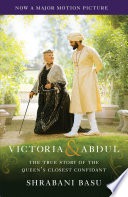After I saw Victoria & Abdul, which I will review for Roar in 2018, I immediately decided to read Victoria & Abdul: The True Story of the Queen’s Closest Confidant, the book which inspired the movie. I was specifically interested in separating fact from fiction and determining whether the film reflected post-modern intersectional sensibilities instead of faithfully depicting the account written in the book. So even though I plan to primarily review the book, the following will also serve as a comparison with the dramatization.
Victoria & Abdul: The True Story of the Queen’s Closest Confidant has a narrative problem. The author will occasionally adopt Erik Larson’s style by imagining what a historical figure thought without an explanation of how Shrabani Basu arrived at this conjecture, but Basu soon abandons this technique, which was a relief, only to pick up another. She then briefly inserts herself in the narrative to describe how she discovered information then deserts that literary device. She eventually finds her footing, but the inconsistent style overall hurts the momentum of the book and made it a slower read than expected.
If I am feeling charitable, Basu is so enamored with royal life that she fails to get to the meat of her story as quickly as I would have liked. Victoria & Abdul: The True Story of the Queen’s Closest Confidant provides much needed context to inform the reader that Indians were not strangers to Victoria’s world, but usually dominated by Indian royalty. Basu bombards the readers with important Indian personages, but abandons all sign of them until the end of the book when she reveals that they were irritated with Abdul’s position and expectations to socialize with him, which is similar to how Victoria’s subjects of higher status or birth reacted. Basu spends more time detailing the grievances of other Indian servants of similar origins to Abdul were mostly irritated by his sudden rise and treatment of them, but in contrast to the movie, there was no irritation with the British detailed in the book. Even someone who is suspected of being a spy for Afghanistan adores Victoria.
Victoria & Abdul: The True Story of the Queen’s Closest Confidant is more comfortable with two realities, which do not negate the other. Abdul was a faithful friend and servant to his regent, but he was also an ambitious man who pushed his favor to angle for better standing while showing no similar generosity to his contemporaries and angering some who considered him of lesser status either because of the ordinary, rigid rules of British colonial society or rooted in prejudice based on his religion, national origin or race. A person can be racist, but hate you because you are an asshole. I’m not saying that Abdul was the latter, but he could have been. His angling for media attention suggests that his humble pose was not completely free of pride, which is not innately a bad thing, but in addition to gaining money, property, society disproportionate to people who had served the Queen for a longer time, receiving adulation from the public probably did not help.
I wish that the book devoted slightly more time explaining the rankings of certain titles instead of assuming that the reader was familiar with the terms such as Viceroy and the significance of certain awards. I thought that I was an Anglophile, but clearly I was mistaken. Keeping track of the number of historical figures, many of whom are not listed in the early cast of characters listed at the beginning of the book, and navigating the hierarchy and system of rewards is not explained until you’re in the middle of a conflict instead of at the beginning. By the end, I think that I grasped the concept of whether someone was behaving appropriately, but I’m too American to be sure. I fundamentally will never understand the fiction of rigid hierarchies based on anything but intellect.
If Dr. Reid had descendants, I am curious if they felt like he was cruelly depicted in the film. Victoria & Abdul: The True Story of the Queen’s Closest Confidant is far more sympathetic to his lightning rod status and how he is much used, but little rewarded in comparison to Abdul whereas the film reduces him to simply being a racist who did not want to do his job. He could be racist and overworked, but there were also enough mitigating factors that suggest that he may be racist and not solely motivated by evil intentions in restoring order to his world.
Even though Basu never infers it, the fascination with Indian culture and people has an element of fetishization. Because Basu never reflects on the downside of adulation or examines whether the visitors are seen as exotic curiosities or real people, neither the film nor the book will settle this point, but the sudden exile of all Indians, not just Abdul, from service in court and the desire for money, not company, of Indian royals at coronation implies that any human connection did not last long after Victoria’s death.
Victoria & Abdul: The True Story of the Queen’s Closest Confidant was not a fun read, but anything that reveals a story that a government tries to suppress is a cheeky read. By the end of the book, you will wonder what all the fuss was about.

Victoria & Abdul: The True Story of the Queen’s Closest Confidant
Stay In The Know
Join my mailing list to get updates about recent reviews, upcoming speaking engagements, and film news.




